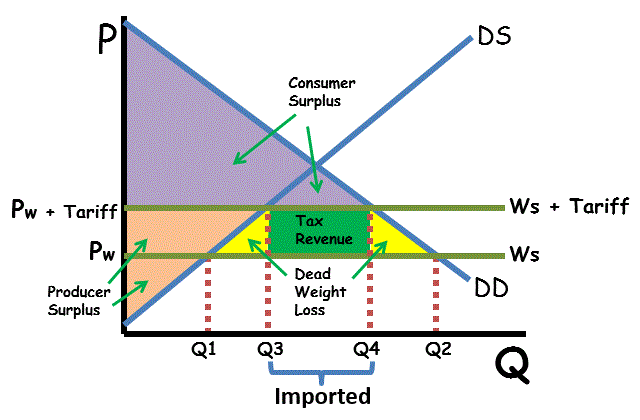International Trade and Public Policy
Changing Equilibria from Trade
Trade leads to reallocation of resources based on comparative advantage
While total surplus increases, indicating overall economic gains, there are winners and losers
Consumers benefit from imports (lower prices)
Producers benefit from exports (higher prices)
Impact of Imports
If the world price is lower than the domestic price:
The country will import the good
Domestic price decreases to match the world price
Consumer surplus increases due to lower prices
Producer surplus decreases as domestic producers receive less for their goods
Total surplus increases, indicating a net gain from trade
Impact of Exports
If the world price is higher than the domestic price:
The country will export the good
Domestic price increases to match the world price
Producer surplus increases due to higher prices
Consumer surplus decreases as consumers pay more
Total surplus increases, reflecting gains from trade
Trade and Tariffs
Quota rent: difference between demand price and supply price
Tariffs: tax placed on a good that is imported or exported
Import quota: restriction on the quantity of a good that can be imported
The purpose of a tariff is to make imported goods more expensive, thereby encouraging consumers to purchase domestically produced items.
Tariffs raise the price of imported goods
Higher prices lead to a decrease in the quantity of imports
Domestic producers may benefit from reduced competition and higher prices
Consumers face higher prices and fewer choices
Tariffs can lead to a deadweight loss, which represents the loss of economic efficiency when the equilibrium outcome is not achievable or not achieved
This loss occurs because some mutually beneficial trades between buyers and sellers do not happen due to the tariff-induced price increase
Tariffs generate revenue for the government, calculated as the tariff amount multiplied by the quantity of imports
While tariffs can protect domestic industries, they often lead to higher prices for consumers and a net loss in total surplus due to deadweight loss
